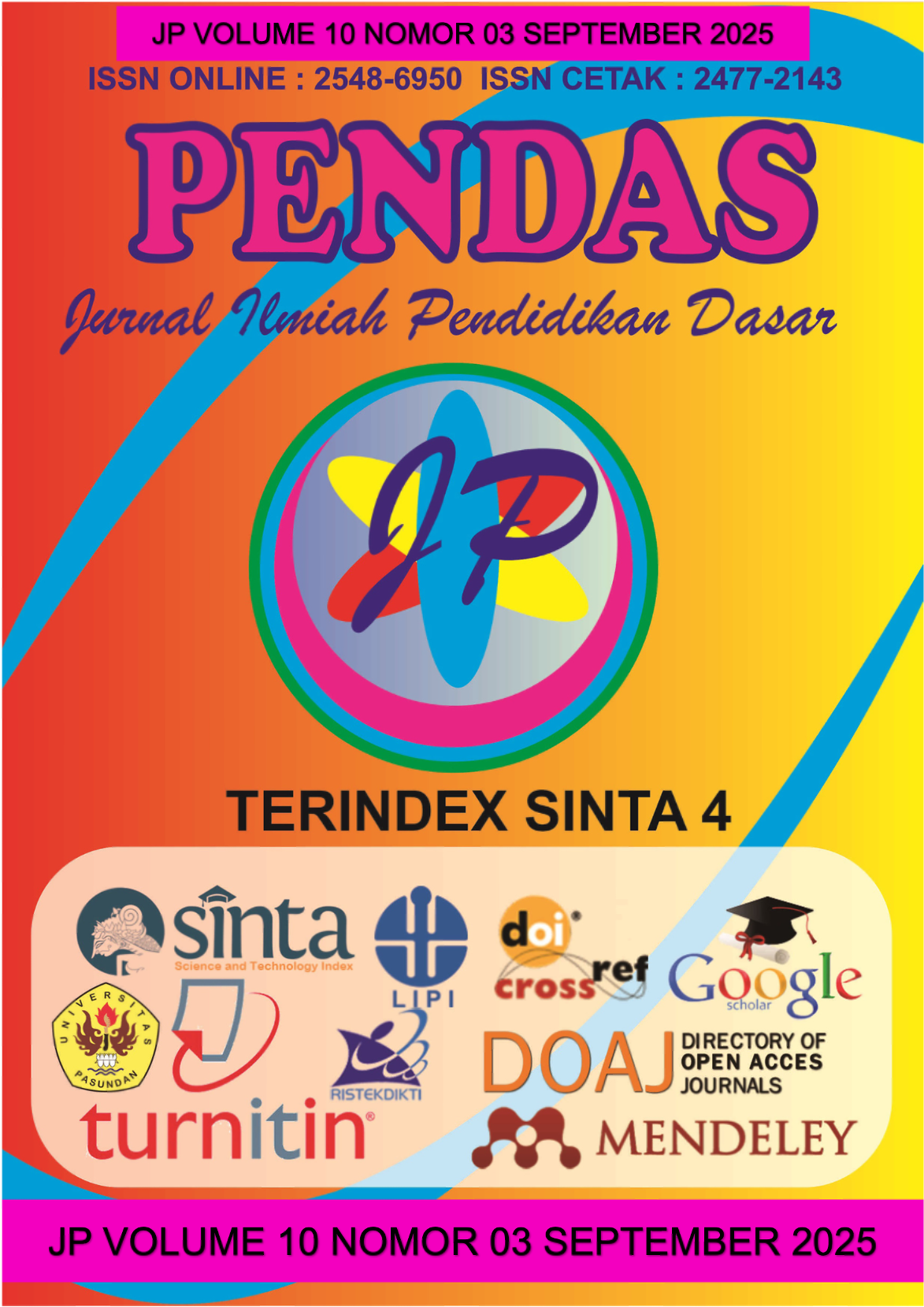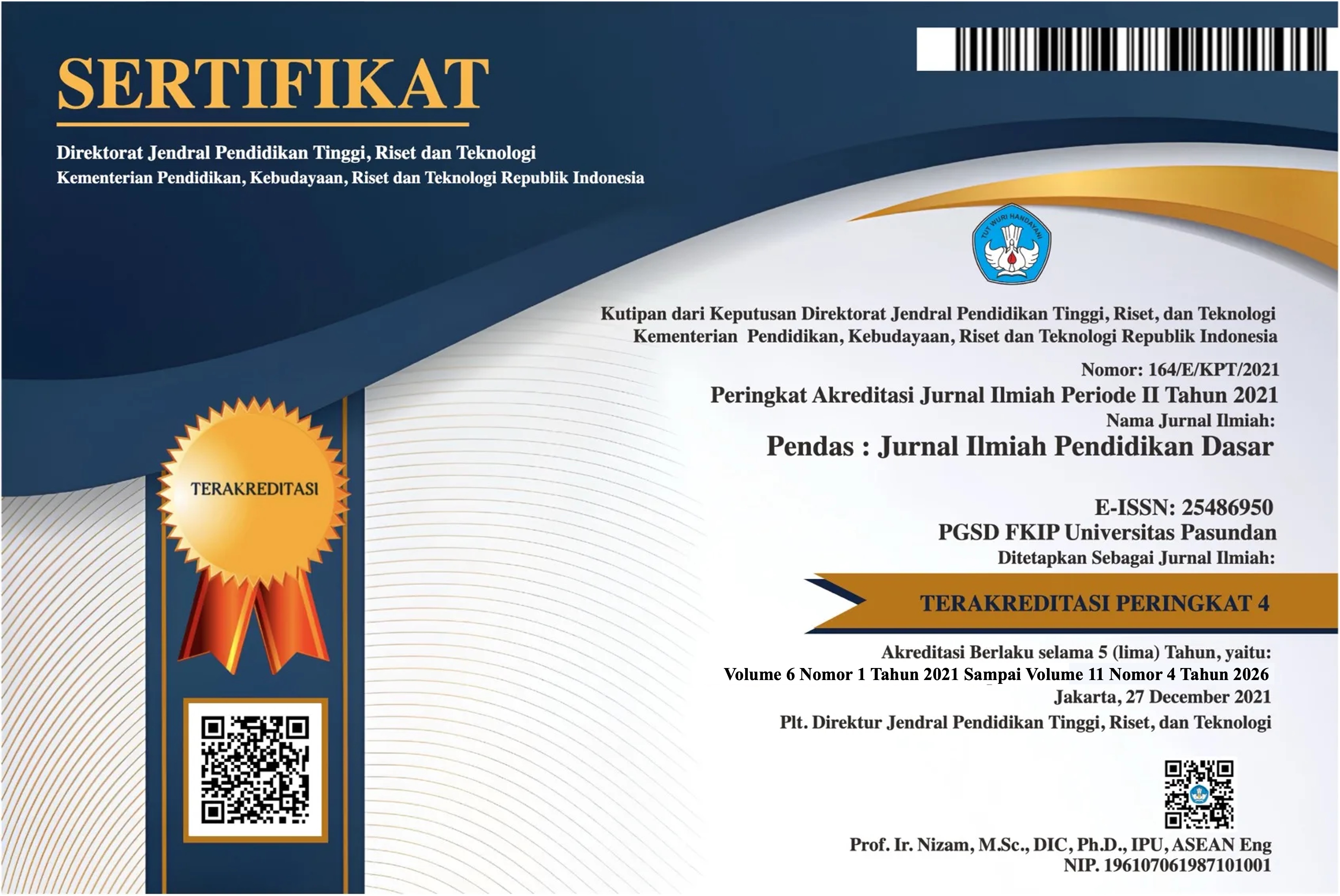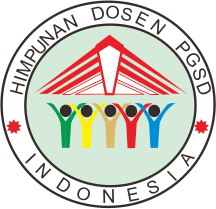MAKNA SEMIOTIKA DALAM LEGENDA NUSANTARA SEBAGAI BAHAN PENGEMBANGAN PENDIDIKAN KARAKTER DI SEKOLAH
Penelitian Kualitatif
DOI:
https://doi.org/10.23969/jp.v10i03.32687Abstract
Legends, as part of folklore, have great potential in character education because they are rich in moral values and local wisdom. However, the symbolic meanings in Nusantara legends have not been widely utilized in learning. This study aims to examine the semiotic meanings in five water-themed legends from Astri Damayanti’s Kumpulan Legenda Nusantara and to evaluate their potential as teaching materials for character education in elementary schools. The research employed a descriptive qualitative approach using Charles Sanders Peirce’s semiotic theory (icon, index, symbol). The findings show that these legends contain strong symbolism related to honesty, responsibility, empathy, and loyalty. The stories also have good readability for students, with simple language and clear narrative structures. Based on these results, this study recommends the integration of folklore into the curriculum as a medium for character education based on local wisdom.
Downloads
References
Buku :
Creswell, J. W. (2014). Research design: Qualitative, quantitative, and mixed methods approaches (4th ed.). Thousand Oaks, CA: Sage Publications.
Danandjaja, J. (2007). Folklor Indonesia: Ilmu gosip, dongeng, dan lain-lainnya. Jakarta: Pustaka Utama Grafiti.
Damayanti, A. (2023). Kumpulan legenda Nusantara. Jakarta: Gramedia Pustaka Utama.
Eco, U. (2015). Teori Semiotika (D.
Hidayat, Trans.). Yogyakarta: Kreasi Wacana. (Judul asli: A Theory of Semiotics, 1976)
Kementerian Pendidikan dan
Kebudayaan Republik Indonesia. (2018). Permendikbud No. 20 Tahun 2018 tentang Penguatan Pendidikan Karakter pada Satuan Pendidikan Formal. Jakarta: Kemendikbud.
Kemdikbudristek. (2022). Buku Saku
Kurikulum Merdeka. Jakarta: Kementerian Pendidikan, Kebudayaan, Riset, dan Teknologi.
Lickona, T. (1991). Educating for character: How our schools can teach respect and responsibility. New York, NY: Bantam Books.
Sobur, A. (2004). Semiotika komunikasi. Bandung: Remaja Rosdakarya.
Sumardjo, J., & Saini, K. (1997).
Apresiasi Kesusastraan. Bandung: PT Remaja Rosdakarya.
Todorov, T. (1971). The Fantastic: A
Structural Approach to a Literary Genre. Cornell University Press.
Vygotsky, L. S. (1978). Mind in society: The development of higher psychological processes. Cambridge, MA: Harvard University Press.
Artikel in Press :
Sari, F. K., Suwandi, S., & Supana. (2018). Character education values in semiotic meaning of legend of Javanese script. Komposisi: Jurnal Pendidikan Bahasa, Sastra, dan Seni, 19(2), 111–122. https://ejournal.unp.ac.id/index.php/komposisi/article/view/8989
Jurnal :
Kuswara. (2021). Apresiasi cerita
rakyat sebagai upaya memperkuat karakter siswa dalam menghadapi revolusi industri 4.0. Basicedu: Jurnal Pendidikan Dasar. Diakses dari https://www.jbasic.org/index.php/basicedu/article/view/678/pdf
Rabbani, F. D., Effendi, R. M., &
Mulyani, A. S. (2020). Analisis keterbacaan cerita rakyat “Asal Muasal Situ Sanghyang dan Si Buncireung” sebagai alternatif bahan ajar di SMA kelas X semester I. Metabasa: Jurnal Bahasa, Sastra, dan Pembelajaran, 2(2), 129–137. Diakses dari https://jurnal.unsil.ac.id/index.php/mbsi/article/view/1262
Downloads
Published
Issue
Section
License
Copyright (c) 2025 Pendas : Jurnal Ilmiah Pendidikan Dasar

This work is licensed under a Creative Commons Attribution 4.0 International License.



















